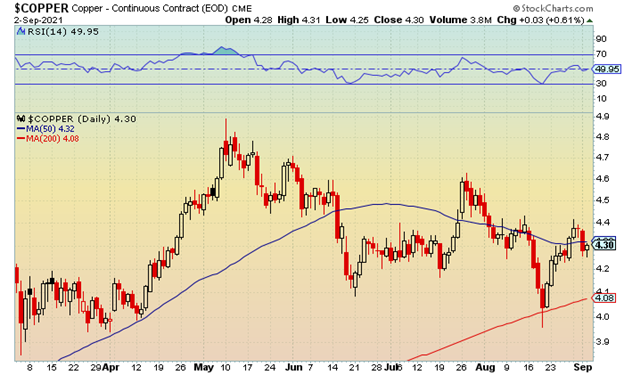There are many of ways to invest in copper, whether through specific companies and exchange-traded funds (ETFs), that investors can use to play the longer-term demand for the red metal.

The chart below shows copper traded at a record high in May to just below the $4.90 level (per pound) and up from a previous all-time high of $4.65 in 2011.

Copper is also a cheaper way to play the metals market instead of buying gold or silver—and it could outperform both in the coming years as the gap between supply and demand widens. There are some estimates that predict the price of copper could double, or even triple, within the next three years.
One of the biggest reasons for higher copper prices will be the ongoing demand for electric vehicles. The metal is durable and has high conductivity and efficiency, making it a key component in EV vehicles, charging stations, and other EV-related products.
There are some risks associated with owning copper and investing in companies that produce the metal, such as a stronger dollar, which tends to reduce demand, as well as higher interest rates. China has also announced that it will release the metal from national reserves in a bid to control commodity prices.
With that said, mining company Southern Copper (SCCO) is the closest thing to a pure-play leader on the red metal, as the company owns a number of production and reserve sites in Mexico and Peru. They also have exploration sites in Argentina, Chile, and Ecuador.
As far as earnings, the company has topped estimates over the past four quarters, despite the fluctuations in copper over the past six months. In its most recent quarter, SCCO reported a profit of $1.21 a share on revenue of $2.9 billion versus forecasts of $1.15 and $2.67 billion, respectively.
The company said sales were up 62% compared to last year, as a result of higher market metal prices for all of their products.
SCCO’s technical outlook is also improving with shares down roughly 20% from its all-time peak north of $82 in early May. The stock seems to have bottomed near the $60 level and is making a run at a 50-day moving average just above $63. Continued closes back above this level would be a bullish development for continued strength $67-$68 and the 200-day moving average.
The company also pays a $3.60 annual dividend, or 90 cents per quarter, which equates to a yield of 5.8%.
Conservative traders could buy the stock at current levels while writing longer-term covered calls to lower the cost basis and collecting a juicy dividend; aggressive traders can target the SCCO January 65 calls that are currently trading at $4. If shares show a continued rebound over the next four months and make a run to $73, these options would be $8 in the money for a double from current levels.
If shares fall back below $60 over this time frame, option traders can exit the position to save the remaining premium.





